There is a need for a careful assessment of the children’s ability to care for an animal as well as the specific requirements of the reptile before picking out a prehistoric pet for them. This informative piece, therefore, seeks to prepare parents and guardians with information on ideal reptile species that are best suited for children. In this article, some crucial arguments will explain how to care for reptiles, how much space they take up, and the disposition of different reptiles. The article will also provide ways of setting up a habitat, feeding the pet, and giving health care so that both the child and the pet enjoy the experience. Providing this information to the parents and guardians aims to demonstrate responsible pet ownership and, simultaneously, allow children to explore these amazing animals in a safe and satisfying environment.
What Makes a Leopard Gecko a Great Pet for Kids?
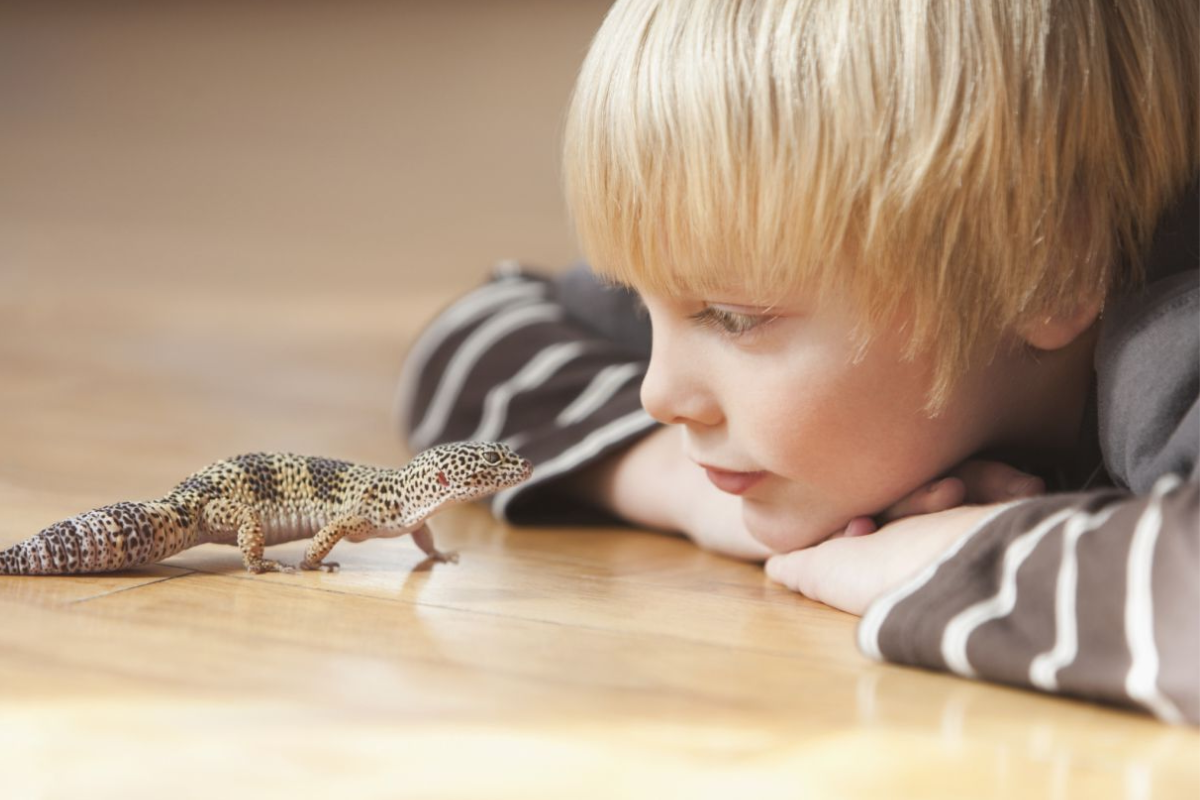
Leopard geckos are perhaps the best pets for children as they are easy to handle and relatively easy to care for and maintain. These reptiles are generally very docile and are hardly aggressive; hence, they can make good pets for young children. Unlike most reptiles, leopard geckos have few habitat requirements; a primary tank with a heating and light source will do the trick. They are also not very big, measuring around 8 to 10 inches, so it isn’t too difficult or scary for children to hold them. In terms of diet, they mainly eat live insects, so there isn’t much hassle when preparing their meals. Moreover, leopard geckos are tough animals with fewer health problems than other reptiles, ensuring that both children and parents are not stressed when keeping the pet.
Why is the Leopard Gecko an Easy to Care Lizard?
Having conducted in-depth research about leopard geckos, I can comfortably note that the simplicity of taking care of them is one of the most attractive aspects for anyone looking to own a reptile. First, leopard geckos do not require ample living space; they do well in a 20-gallon tank, which is very manageable in most homes. They primarily feed on live insects like crickets and mealworms, readily available in pet shops. Also, the leopard geckos do not require complex humidity or other specialized lighting, apart from an ordinary heat source, which makes it easy to sustain their environment. Their friendly nature and the absence of sophisticated health needs make them even more appealing as a relatively easy pet to care for.
How to Set Up an Enclosure for a Leopard Gecko
To ensure a leopard gecko’s habitat is conducive to its health and well-being, begin with a minimum 20-gallon tank. Opt for a terrarium with adequate ventilation and a secure lid to prevent escape. The substrate should be reptile carpet or paper towels to avoid ingestion-related health issues.
Lighting and Heating:
- Temperature Gradient: Create a thermal gradient within the enclosure with a basking area temperature of 88-92°F (31-33°C) and a more relaxed side around 75-80°F (24-27°C). This can be achieved using under-tank heating pads or ceramic heat emitters.
- Night Temperatures: Temperatures can safely drop to 70-75°F (21-24°C). No special night lighting is necessary unless temperatures fall below this range.
Humidity: Maintain the enclosure’s humidity between 30% and 40%. This is typically achievable by ensuring proper ventilation and might require occasional misting during shedding periods to facilitate skin removal.
Decor and Hides:
- Hides: Provide at least two hide boxes—one on the warm and the other on the cool side. A humid hide with damp sphagnum moss or similar material is beneficial during shedding.
- Enrichment: Include safe climbing structures and non-toxic plants to replicate a natural environment.
Water and Feeding:
- Water Dish: Always provide a shallow dish with fresh, dechlorinated water.
- Feeding Dish: A shallow dish can help contain live food, such as mealworms, preventing them from burrowing into the substrate.
Ensuring these elements are correctly set up will create a safe, comfortable environment for your leopard gecko to thrive. Regular monitoring and maintenance of these habitat specifications are crucial for optimal health and longevity of the pet.
What to Feed Your Leopard Gecko Pet?
A more concrete details, this refers to the age, sex, and size of the leopard geckos population as they all have the same growth patterns and sizes . For successful reproduction, all leopard geckos adapt to eating a particular diet, i.e., an insect-centric approach. Their habitat can support various foods, with crickets, mealworms, and waxworms being the primary focus. About their diet, the gecko type requires crickets as they are protein-rich and easy to digest. However, waxworms contain excessive calories, so they should not be fed to animals as their primary food source. Suitable insect sizes should be fed, and generally, not more than the distance between the gecko’s eyes to avoid wrapping.
Dietary Supplements:
- Calcium and Vitamin D3 Supplement: Dust insects with a calcium powder containing vitamin D3 before feeding. This ensures proper bone health and prevents metabolic bone disease. Dust insects 2-3 times a week.
- Multivitamin Powder: Offer a broad-spectrum reptile multivitamin supplement once a week to compensate for any nutritional gaps.
Hydration Needs:
Greyscale females should ideally coagulate for most of their water needs, but if there is no dechlorinated water, the shortage can overwhelm them.
With proper nutrition, including supplementation, it is possible to keep the leopard gecko healthy and happy. This is preventive, as it takes into account the gecko’s present stage of development and individual complexities in planning the diet.
Is a Bearded Dragon the Best Reptile Pet for Your Child?
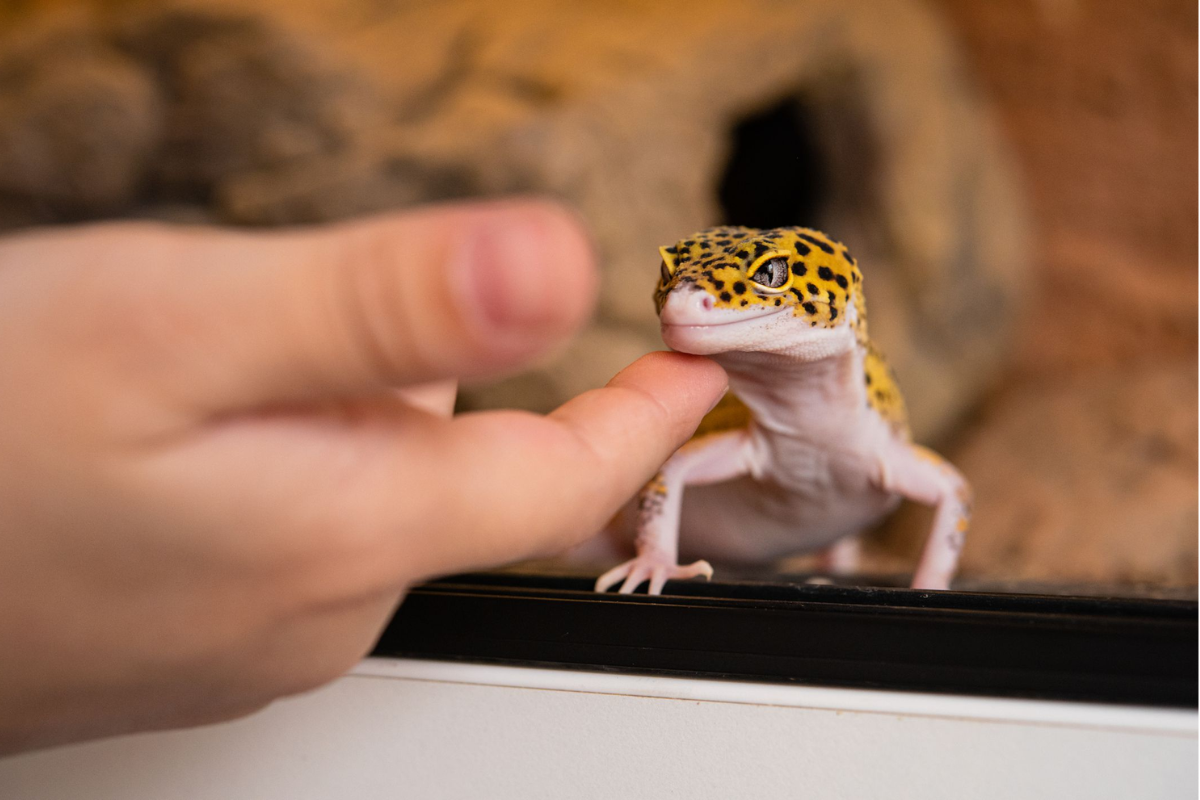
One is likely to notice a bearded dragon gecko and recommend it as an ideal reptile pet for children, mainly because they are friendly and interactive. As these lizards are calm, they can even be tamed and handled, which is invariably pleasing to curious children. Regarding care, bearded dragons have more complex needs than leopard geckos, as they have specific areas for basking and specific temperature gradients crucial for thermoregulation and general health. Nutrition-wise, however, it is not overly complicated as bearded dragons can be fed vegetables and live insects, which provide a good learning experience on healthy pet diets for young owners. Bearded dragons are also hardy and do not suffer many health issues if they receive proper care – ideal for families willing to care for and interact with the pets. Provided everything is set up correctly, bearded dragons can be entertaining as pets, instilling an appreciation of reptiles and animals in children.
Understanding the Temperament of Beardies
In my experience with bearded dragons, charmingly referred to as beardies, I can say that their manners are incredibly calm and curious, making them great pets. They are generally relaxed and tolerant when handled, which is quite a plus for those wanting to have an interactive pet lizard. It’s common for bearded dragons to engage in head bobbing or arm waving, which can be interesting for those watching them while providing an understanding of their social behavior. Because of their excellent temperament, they do not give their owners a hard time when it comes to handling, and most of them seem to appreciate being out of the cage. Also, these reptiles can be made more amenable and attached to owners if they are dealt with kindly and often from a young age. Still, beardies are known to be easily approachable and entertaining pets for people of all ages and reptile lovers.
How to Care for the Animal and Keep Your Beardie Healthy
In advocating for bearded dragon care, I must design a housing environment similar to the natural settings of bearded dragons and their illnesses. For instance, I provide a basking zone that has temperatures ranging from 95-110°F (35-43°C) while a more relaxed zone has a temperature of 75-85°F (24-29°C), but this temperature can drop to at least 65–75°F (18-24°C) during the night. This incorporates the proper use of UVB lighting, which enables calcium to be absorbed since it is critical in guarding against metabolic bone disease. It is also prudent to provide a rich diversity of habitats, such as rocks and branches, so the animals can climb and exercise.
As for the diet, I would present them with various vegetables like collard greens, squashes, and carrots, together with live food like crickets and mealworms. It is important for clients to be aware of the scraping dusting onto the feed that includes calcium and a multivitamin with vitamin D3. I also maintain hydration by providing clean water and doing light spraying a few times a week to keep humidity levels moderate (around 20-40%).
As part of their regular management, I look for activity levels, body mass index, and appetite patterns. Also, one should take the dragon to a vet from time to time for other health problems. Managing temperature, exposing the minimum amount of ultraviolet rays, and feeding a balanced diet are the main concepts driving efficient bearded dragon management.
Why Bearded Dragons Make Great Pets for Kids
Bearded dragons make a perfect pet for kids since they are small, calm, and do not need much care. They reach a length of 18-24 inches, which is appropriate for children to be able to handle at a young age. Their calm nature and ability to deal with mean kids can play with the bearded dragons without causing stress to the animal, creating a more engaging learning environment.
From a husbandry point of view, bearded dragons can be housed in an enclosure with a thermal gradient that has a hot end of between 95-110 ᵒ F (35-43 ᵒ C), while the more remarkable part of the enclosure is maintained at 75-85 ᵒ F (24-29 ᵒ C). Nighttime temperatures can be kept at 65-75 ᵒ F (18-24 ᵒ C), which is beneficial as thermoregulation is essential. UVB lighting is also required to enable vitamin D3 and calcium for bone health.
Feeding is likewise uncomplicated. They collect some live insects, including crickets, and vegetables, including collard greens and squash. This moderate diet is suitable for their growth and teaches kids the basics of meal preparation. Optimal degrees of hydration temperature are provided by a daily supply of fresh heat and the occasional misting. The humidity levels are maintained at 20% to 40%.
These bearded dragons are fun pets to keep as they entertain and teach young, responsible pet owners with the help of enthusiastic guardians. Their interactive tendencies are entertaining and informative, from a pet care standpoint, and for understanding reptile behavior, which is why bearded dragons can be ideal pets for young children.
Are Corn Snakes Good Pets for Kids?
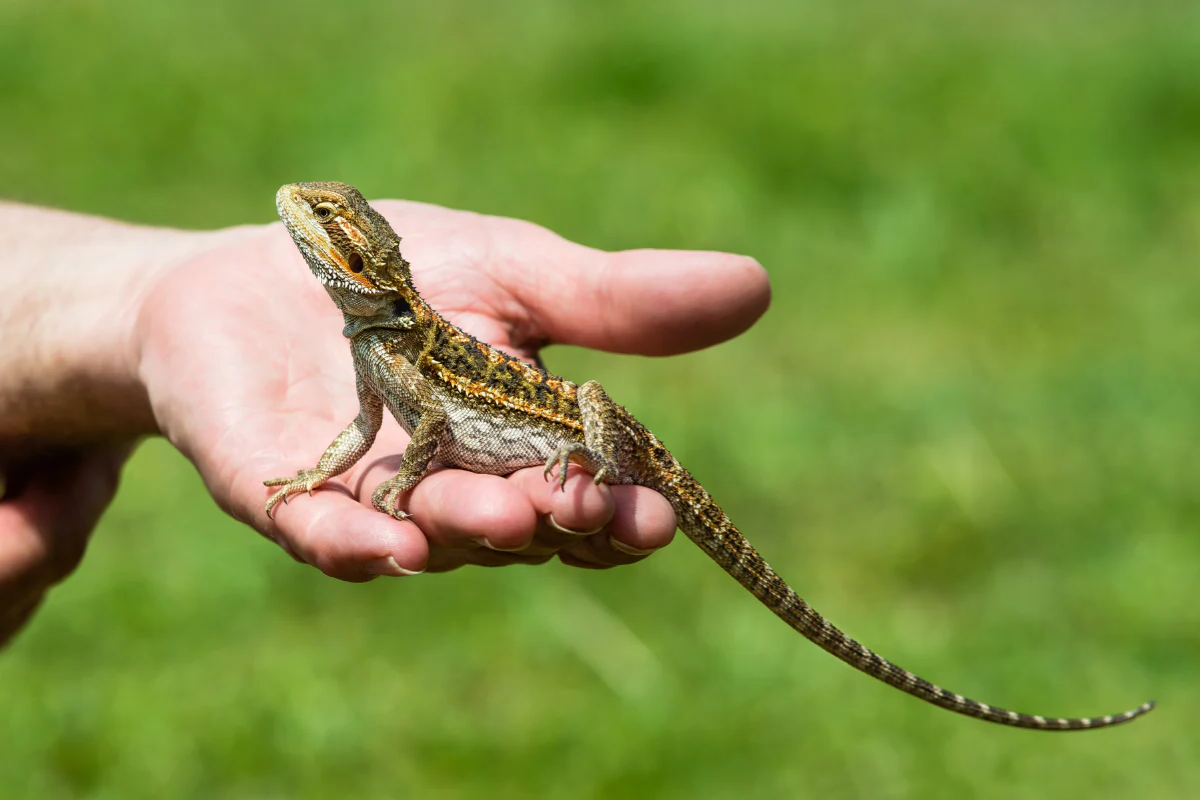
Corn snakes can make excellent pets for children due to their manageable size, docile temperament, and relatively simple care needs. Typically reaching 3 to 5 feet in length, corn snakes are easy to handle and pose minimal risk to young pet owners. They are known for their calm and non-aggressive nature, which makes them an ideal introductory snake for children. In terms of care, they require a secure tank with appropriate substrate and hiding spots to feel comfortable. Heat lamps or pads are needed to maintain the correct temperature gradient within the enclosure. Their diet consists mainly of appropriately sized rodents, which should be pre-frozen and thawed to ensure health and safety. With routine cleaning and consistent feeding schedules, corn snakes can be low-maintenance pets, providing educational and rewarding experiences for children interested in reptiles.
What Makes Corn Snakes Easy to Handle?
From my interactions, corn snakes are popular reptiles as they are relatively easy to work with owing to their calm and docile nature. In general, they are friendly, and most tend to put up with being picked up and handled, making them suitable for new owners of snakes. Due to the manageable size of corn snakes, their overwhelming size, which often poses a challenge in handling more giant snakes, is not a fear factor. With the absence of the large size of snakes, corn snakes do not tend to display aggressive behavior due to stress factors, making handling corn snakes simpler.
Setting Up the Ideal Enclosure for Your Corn Snake
When installing a corn snake in an enclosure, the best approach is to construct an environment that looks like the ones they inhabit in the wild while keeping their health and safety in mind. Two such tanks are advised: a 20-gallon tank for younger snakes and a 40-gallon tank for full-grown snakes, both of which have no escape routes. To stop them from escaping, the cage has a lockable cover. Use an appropriate substrate like aspen shavings or cypress mulch, which enables burrowing and retains humidity without posing health risks, to cover the bottom.
Temperature and Heating: Maintain a temperature gradient within the enclosure. The warm side should be between 80-85°F (27-29°C), while the more relaxed side can be around 70-75°F (21-24°C). Use a heat mat or heat lamp to achieve these temperatures, and consider a thermostat to regulate heat output to avoid overheating. Avoid heat rocks, as they can cause burns.
Humidity: To support healthy shedding, ensure humidity levels are maintained between 40% and 50%. This can be achieved by regularly misting the enclosure or placing a humidity box lined with damp sphagnum moss inside.
Lighting: While corn snakes do not require UVB lighting, providing a day/night cycle with ambient lighting helps maintain their circadian rhythm.
Hide and Enrichment: Provide at least two hide boxes, one on the warm and one on the cool sides, to offer a sense of security. Adding branches or other climbing structures offers enrichment and allows for natural behaviors.
By understanding and implementing these technical parameters, the enclosure ensures the corn snake’s comfort and contributes significantly to its overall well-being and longevity. Regular monitoring and adjustments based on the snake’s needs further enhance this setup.
Why Consider a Crested Gecko as a Child’s Pet?
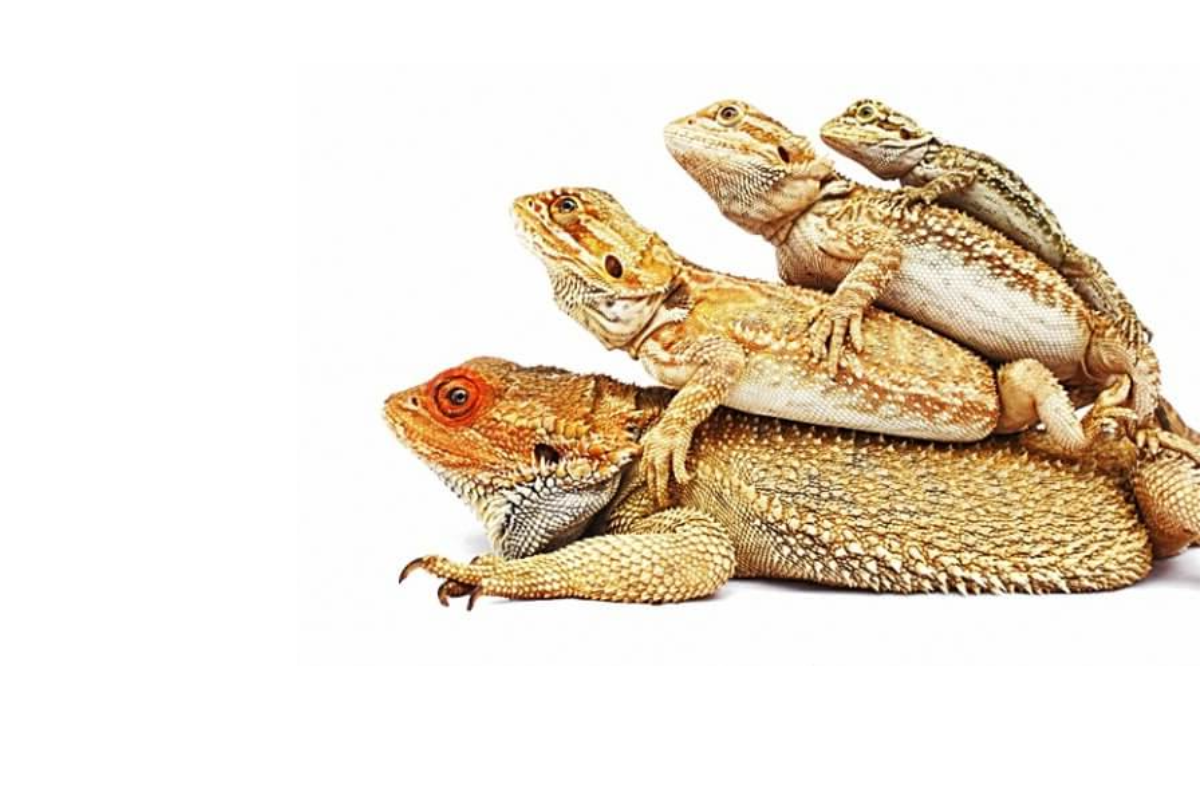
Crested geckos are highly suited for children due to their gentle nature and low-maintenance care requirements. These geckos are arboreal creatures that thrive in simple enclosures with vertical climbing spaces, making habitat setup straightforward and cost-effective. They do not require supplemental heating or lighting, as they are well adapted to room temperature environments, easing the complexity of care for young pet owners. Their diet primarily consists of commercially prepared gecko food, often supplemented by occasional insects, simplifying feeding routines. With proper care, crested geckos can live for over ten years, providing long-term companionship for children and rewarding opportunities to engage with and learn about the natural world.
What Reptiles Make Good Pets for Children?
When considering reptiles as pets for children, several species stand out due to their manageable care requirements, gentle temperaments, and educational value. From my research, the top choices are bearded dragons, corn snakes, and crested geckos. Bearded dragons are known for their engaging personalities and adaptability to handling, along with straightforward dietary and heating setups requiring temperatures ranging from 75-100°F (24-38°C) with UVB lighting. Corn snakes’ easy-going nature and minimal husbandry needs, such as a controlled temperature gradient and appropriate feeding of pre-frozen rodents, make them ideal. Crested geckos offer simplicity with their low-maintenance diet of commercial gecko food and the absence of complex heating or lighting setups, thriving at ambient room temperature. Each reptile fits the criteria for being a good pet for children as long as proper care and supervision are maintained to support both the child’s learning experience and the reptile’s well-being.
How to Care for the Animal and Ensure Your Crested Gecko Thrives
To ensure your crested gecko thrives, providing an environment that mimics its natural habitat while meeting its specific care needs is crucial. Start with a vertical enclosure ideally sized at 20 gallons to allow ample climbing space.
Enclosure Setup: Use a terrarium with a screen top for ventilation and incorporate branches, cork bark, and foliage to simulate a natural environment and enable climbing.
Temperature & Humidity: Maintain the habitat at room temperature ranging from 72-78°F (22-26°C). Crested geckos thrive without supplemental heat, but a small heat source might be necessary in cooler climates to maintain the minimum temperature. It is imperative to monitor humidity levels and keep them between 60-80%, achieved through daily misting and naturalistic substrates like coconut fiber, which retains moisture.
Diet: Offer a well-balanced diet consisting mainly of commercially available gecko meal replacement powders, supplemented occasionally with live insects like crickets or small roaches dusted with calcium and vitamin D3 to promote bone health. The meal replacement powder should be mixed according to the manufacturer’s instructions and offered every other day, while insects can be provided once or twice a week.
Handling & Interaction: Crested geckos are gentle and can be handled by children under supervision. However, to reduce stress, it is recommended that the gecko be allowed to acclimate to its new environment for the first few weeks with minimal handling.
Adhering to these care guidelines and regularly checking for signs of illness, such as lethargy, weight loss, or shedding problems, can ensure your crested gecko remains healthy. Regular veterinary check-ups further support their health and longevity, making crested geckos ideal long-term companions for children interested in reptile husbandry.
How Does a Blue-Tongued Skink Compare to a Pet Reptile?
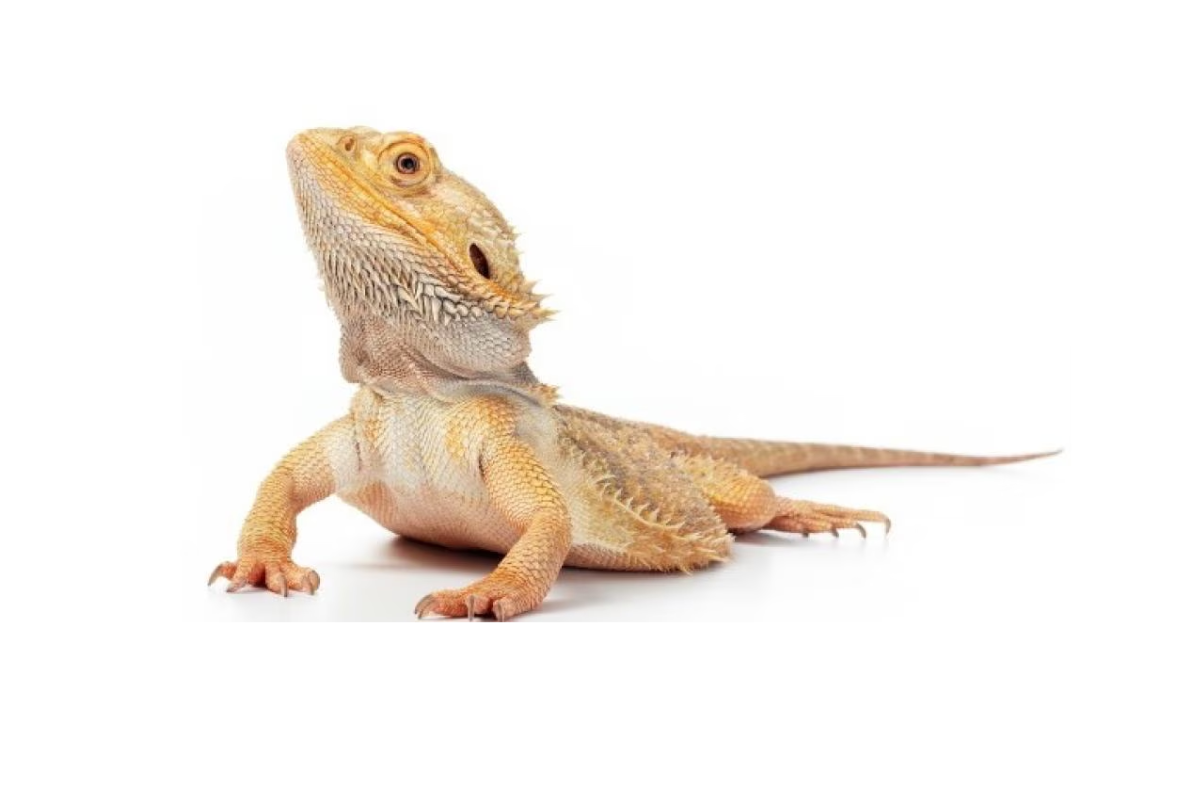
Thanks to their curious looks and calm nature, blue-tongued skinks are rated as one of the best reptiles to be kept as pets. They are lizards of medium size, 18 to 24 inches long, which makes them large yet safe for children to handle due to their relative size. Their calm character means most blue tongs do not get stressed, allowing children to bond with their pets. The length of a blue-tongue skink determines the size of a well-ventilated cage they require. They eat a combination of fruits, vegetables, and proteins, thus making it easy for kids to understand different eating habits. Blue-tongued skinks are an ample choice for busy families seeking a pet that is not too demanding but offers superb interaction.
What Makes the Blue-Tongued Skink Manageable for Kids to Take Care?
As far as I know, blue-tongued skinks are pretty suitable for kids because they are easy to care for and have a calm temperament. They are much more easy-going compared to more temperamental reptiles, thus providing children with a safer and more enjoyable experience. Based on what I have seen on the internet, they can adapt to several different habitats; their simple diet can consist of fresh vegetables, cooked meat and eggs, and fruits. As long as they are maintained in a clean, appropriately heated, and reasonably sized enclosure, blue-tongued skinks seem to experience few health problems. For young reptile enthusiasts, blue-tongued skinks are an ideal and rewarding pet choice due to their low maintenance and friendly nature.
Why Blue-Tongued Skinks Are Popular Pets for Kids
Blue-tongued skink is a common choice for kids as they have a moderate body size, are calm, and require relatively less care. According to experts, these reptiles can be quiet, so allowing children to hold them while supervised is appropriate, thereby teaching safe and responsible pet handling. They measure between 18-24 inches, which is practical and will enable children to handle them. The care required of blue-tongued skinks includes an enclosure where the temperatures are about 75-88 degrees Fahrenheit (24-31 degrees Celsius) during the day and 70 degrees fahrenheit (21 degrees Celsius) at night; the humidity should also be maintained at 40-60% and this can be done by spraying an aquarium mist now and then. Their feeding practice is simple; these are omnivorous creatures who can consume leafy ventricles, fruits, and protein diets like cooked chicken and egg. Also, because the skinks are regularly fed and the cage cleaned, and the animals monitored for signs of stress or disease, some of the possible health threats are reduced, thus making them a safe pet for children interested in reptiles.
References
Frequently Asked Questions (FAQ)
Q: What are the best reptiles to get for a small child?
A: When considering reptiles to get for a small child, leopard geckos and bearded dragons are among the best options. They are relatively easy to care for and have calm temperaments, making them easier for kids to handle.
Q: Why do reptiles make great pets for children?
A: Reptiles make great pets for children because they are generally low maintenance, can be very tame, and teach your child responsibility. Many reptiles, like turtles and tortoises, have long lifespans, allowing many children to grow up with them.
Q: Is a ball python a good choice for a child who really wants a snake?
A: Yes, a ball python is a good choice if your child really wants a snake. They are known for their docile nature and manageable size, typically growing up to 4-5 feet long, which makes handling easier for kids.
Q: How can I determine if a reptile is the right pet for my child?
A: Consider if your child has a genuine interest in reptiles and is ready for the time commitment of caring for their pet. It’s important that your child may understand the specific needs of the reptile they are interested in.
Q: What should I know before getting my child a tortoise?
A: Before getting your child a tortoise, understand that they require a specific diet, habitat setup, and can live for many decades. They are a long-term commitment but are gentle and make great pets if properly cared for.
Q: Are there any reptiles that are particularly low maintenance?
A: Yes, turtles and leopard geckos are considered low maintenance compared to other types of reptiles. They have minimal habitat requirements and can thrive with basic care, making them ideal for beginners.
Q: What are some signs that a reptile may not be the best pet for a child?
A: If a child gets bored easily or is not willing to commit to the care a reptile requires, it may not be the best pet choice. Additionally, if the child is fearful or uninterested in learning about the reptile, consider other pet options.
Q: Can having a reptile teach my child responsibility?
A: Yes, having a reptile can teach your child responsibility through regular feeding, habitat maintenance, and handling. This experience can be invaluable in developing a sense of accountability and care.
Q: What are the differences between getting a pet lizard like a blue tongue skink versus a snake like a boa?
A: A blue tongue skink is generally more interactive and easier to handle for children, while a boa requires more space as it can grow up to 10 feet long and may need more advanced care. Consider your child’s comfort level and your ability to provide the necessary environment when choosing.
